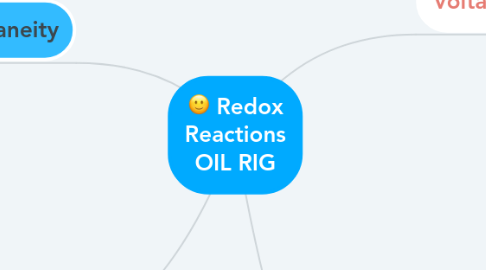Redox Reactions OIL RIG
da Cindy Powell


1. Spontaneity
1.1. Voltaic cell will always run in a direction that gives a + E cell; if -E cell, then reverse reaction is spontaneous
1.2. delta G= -nFE
1.2.1. If +E cell, -G= spontaneous
1.2.2. If -E cell, +G= non-spontaneous
1.2.3. E cell & G=0 = equilibrium
1.2.4. F= Faradays' constant which is the charge carried by 1 mol of e- = 96,500 C mol-1
1.2.4.1. E is J=C x V
1.2.4.1.1. G= Gibb's free energy in J
2. Factors affecting product in electrolysis
2.1. Increasing current and time will increase the product
2.2. Smaller charge creates more product (use molar ratio) Cu+1 will make 2x more than Cu+2
3. Voltaic cells
3.1. Spontaneous: Uses chemical reactions
3.2. Anode is negative; oxidation occurs
3.2.1. The more reactive metal is located here
3.2.2. Mg>Al>Zn>Fe>Pb>Cu>Ag
3.2.3. Ex: Zn(s) --> Zn+2 (aq) + e-
3.2.4. The E cell is less positive
3.3. Cathode is positive; reduction occurs
3.3.1. The less reactive metal is located here
3.3.2. Ex: Cu+2(aq) +2e- --> Cu(s)
3.3.3. The E cell is more positive
3.3.3.1. The more Positive, the more readily is reduced (able to accept electrons)

